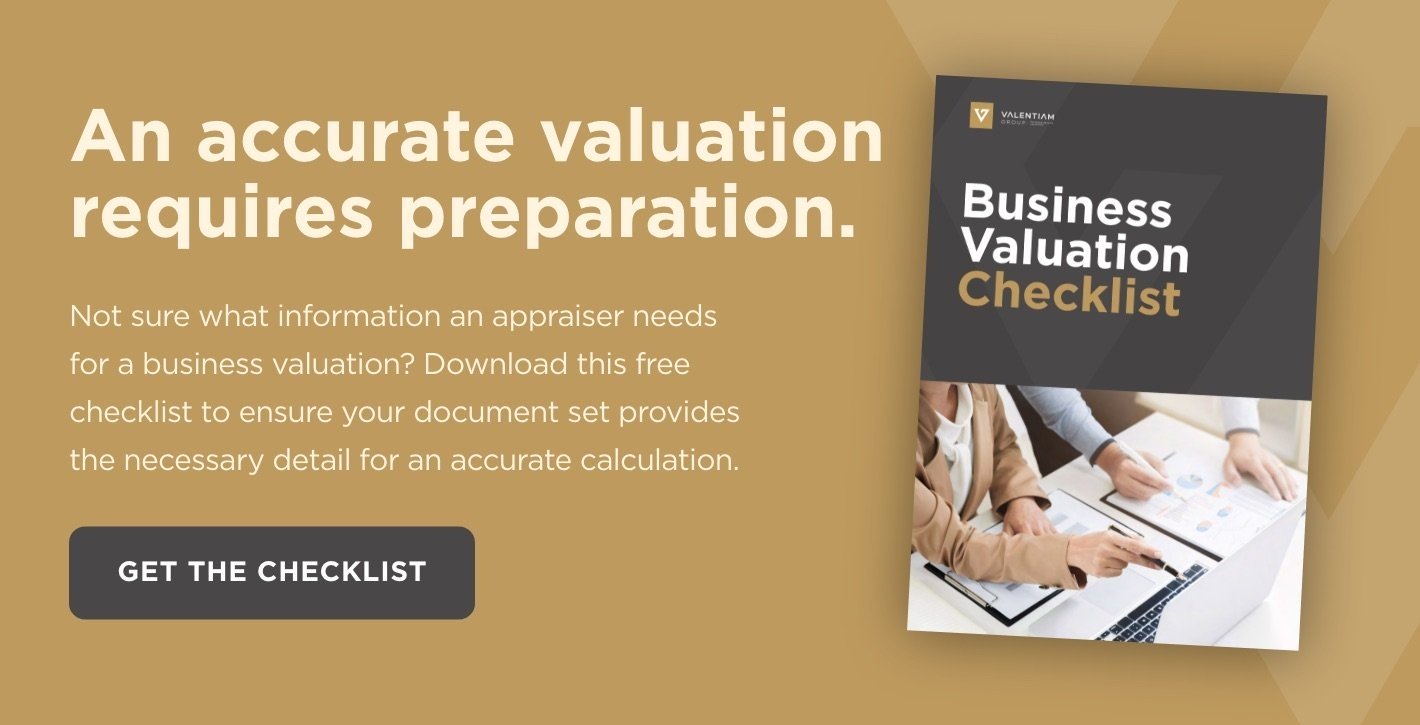SaaS Company Valuations: What You Need To Know
Posted by Valentiam Group on July 20, 2021

Business valuation tends to be a complex process, but an established business can provide an important starting point. A valuation expert will look at the company financials and metrics for comparable businesses (where available) and determine which of the three classic valuation approaches—market, cost, or income—is most appropriate to apply.
Software as a service (SaaS) company valuations are a horse of a different color. Because so many SaaS companies are startups without much in the way of income history, valuation specialists must often adjust their approach. In this article, we’ll examine different ways an appraiser can perform SaaS company valuations.
SaaS Company Valuation Methods
For SaaS companies that have adequate revenue history, most are valued using a multiple of seller discretionary cash flow (SDE, typically used in valuations for small businesses with less than $5 million in annual revenue) or a multiple of earnings before interest, taxes, depreciation, and amortization (EBITDA). The formula for SDE is:
|
SDE = Revenue + owner compensation – cost of goods sold – operating expenses |
SDE represents the profit left to the business owner after all costs of goods sold and essential operating expenses are deducted from the gross income; it represents the true earning power of the business. EBITDA represents the same thing for larger businesses. Once the SDE or EBITDA is established, SaaS valuation multiples are applied to determine the value of the business.
The determination of the appropriate multiple to use is the most difficult part of the process. There are a number of variables to consider when determining the multiple; the following are the most common:
- Owner involvement: Similar to the key man discount often used in business appraisals, owner involvement is a factor in SaaS company valuations. If you are the business, it will be harder to sell the business since your work is what has made it valuable.
- Growth trends: What is the revenue trajectory? Investors typically prefer to see stable growth month-over-month.
- Business age: A longer track record of profitability will translate into a better multiple.
- Churn rate: What’s the annual turnover in the customer base? A high churn rate may result in a lower multiple if the churn is not offset by a high lifetime customer value and a low customer acquisition cost.
- Lifetime value (LTV): What is the lifetime revenue value of each customer?
- Customer acquisition cost (CAC): This variable represents the cost of marketing to acquire customers. CAC must be low enough and LTV high enough to offset churn and ensure long-term growth. Ideally, the LTV divided by the CAC yields a number of three or higher; this figure indicates that the business has a healthy growth rate, and there is some cushion in case LTV goes down or CAC goes up.
- Monthly recurring revenue (MRR) vs. annual recurring revenue (ARR): Though young SaaS companies may be tempted to sell discounted annual plans as a means of quickly improving revenue and cash flow, ARR is less important than MRR for SaaS valuations. MRR is valued about two times more than equivalent revenue from lifetime plans. ARR multiples for SaaS company valuations are lower because monthly revenues are less predictable; churn can only be measured on an annual basis using ARR. So, while revenue and cash flow can be stimulated through the sale of annual plans, in a sale or M&A transaction, the lower ARR multiple for the SaaS company valuation will result in a lower value and sales price.
These are the primary factors that will determine the multiple used to establish the company’s value in SDE- and EBITDA-based valuations. SaaS valuation multiples range from four (for low revenue, young companies with high owner involvement, flat growth, and high churn) to 10 (for higher revenue, more established companies less reliant on owner involvement with growing revenues and low churn).
Download our free Business Valuation Checklist to learn about the information needed to calculate an accurate value for your business.
SaaS Company Valuations For Startups
For startup SaaS companies, valuations are trickier. New startups typically have limited revenue history, making it challenging to establish a value.
One approach is to value the opportunity cost of purchasing the SaaS business versus investing the same amount elsewhere. Depending on revenue and multiples, the company may not be worth much when valued using this approach.
Another option is to use a Monte Carlo simulation. In the Monte Carlo model, simulations are run on a wide range of revenue possibilities to predict probable outcomes; once simulations are run, a pattern begins to emerge. The scenarios and probabilities can be transformed to a statistical approach that can be used in a discounted cash flow analysis.
Ultimately, for startup SaaS company valuations, the safest route is to use multiple models, dig deeper into the specifics of the market and competitors, and use caution in making assumptions. The general assumptions for more established companies don’t apply. The range of factors at play in SaaS company valuations, combined with the difficulty in valuing startups, makes value much harder to establish and more subject to the validity of assumptions made in the valuation process.
Need help determining the value of your SaaS company?
Valentiam has helped companies in a variety of industries attain accurate enterprise and asset valuations. We have extensive experience in the application of all valuation methods for a broad range of businesses and situations. Our valuation and transfer pricing specialists have worked with some of the largest companies in the world.
Contact us to see how we can help your company with your valuation and transfer pricing needs.
Topics: Business valuation
Related Posts
EBITDA Multiples By Industry: An Analysis
EBITDA multiples by industry indicate growth, profitability, and stability of profits in various sectors—and are a quick and easy way to estimate value.
Valuation Methods: A Guide
Different types of business valuation methods are suited to specific needs. Here are the three primary types of valuation techniques and when they should be used.


